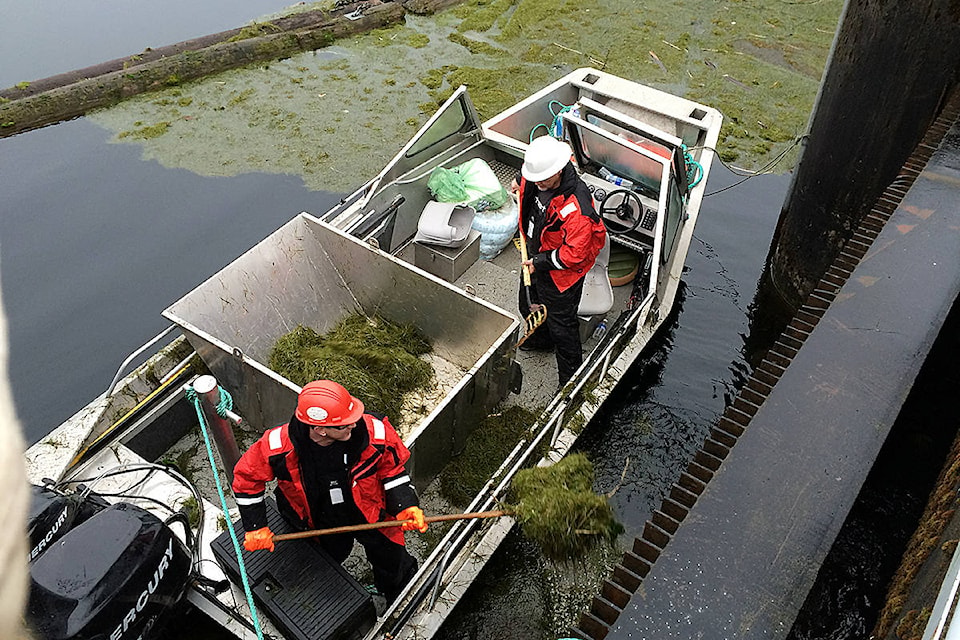It’s that time of year when pond weed, through wave and wind action, detaches from the reservoir shorelines and begins to build up on water intake trash racks on the John Hart dam.
The debris is beginning to cause some modest pressure issues and can lessen power generation capacity as the water enters the penstocks and travels 1.8 km to the generating station, BCHydro spokesperson Stephen Watson says. To safely remove the debris, the amount of water drawn into the penstocks must be significantly reduced. This will provide an extra water release down Elk Falls Canyon to maintain targeted downstream fish habitat flows
BC Hydro has a fish flow target in the Campbell River below the generating station. With four of six units inside the old generating station currently operating, each unit will be reduced from about 20 MW to about 6 MW. This means the generating station discharge into the Campbell River will be reduced from about 80 cubic metres per second (m3/s) to about 28 m3/s. To provide the target fisheries flow of 124 m3/s, about 96 m3/s will be released down Elk Falls.
The two-day cleaning process will take place on Wednesday and Thursday. Flows in the canyon will rise from about 42 m3/s to 96 m3/s on Tuesday night and last through Thursday before going back down.
“We ask the public to stay away from the Campbell River above Elk Falls on Wednesday and Thursday,” Watson says. “Safety warning signage is in place. This will be another opportunity for the public, from the safety of the suspension bridge and lookout, to see Elk Falls flowing at a rate about 24 times normal.”
The Elk Falls Canyon base flow for fish habitat is 4 m3/s. There is a standing public safety notice for Elk Falls Canyon through to May with canyon flows being up to around 60 m3/s, depending on generating unit availability, as part of the John Hart project and the transfer of water flows from the old generating station to the new underground facility.
